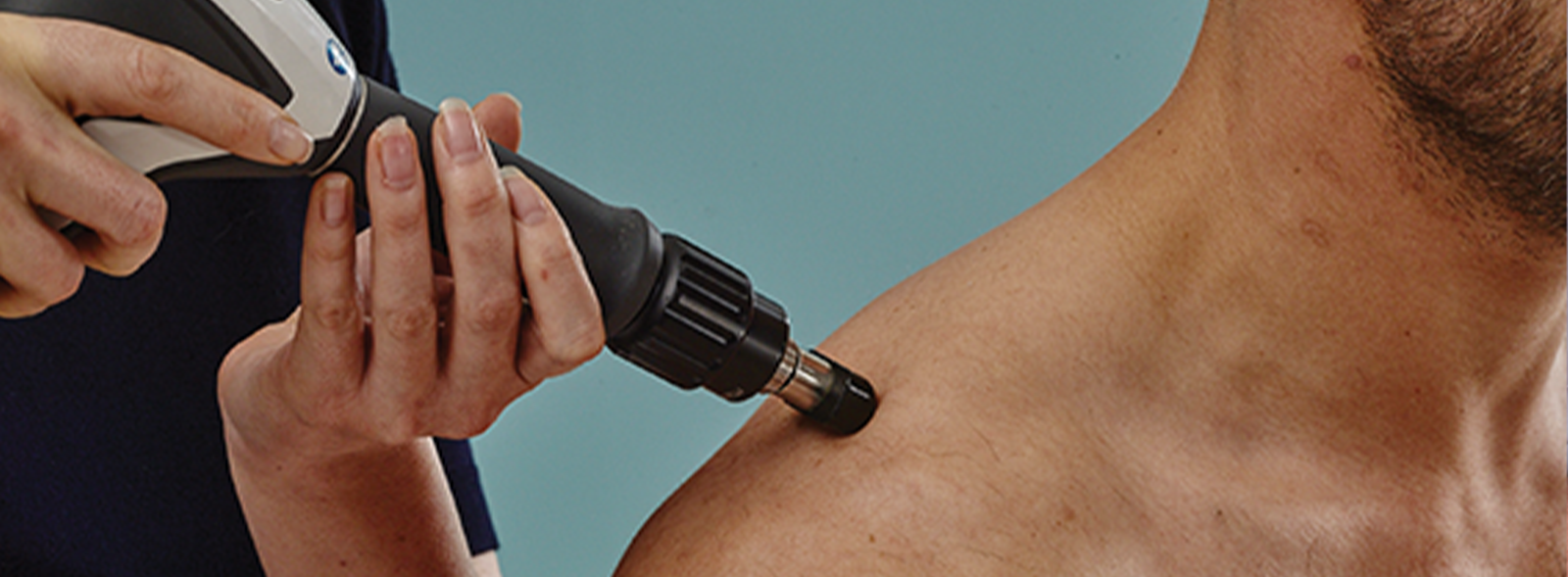What is fascia therapy and how to apply it?

The fascia past and present
Our body consists of muscles, bones, nerves, joints and much more. We know how all these parts work and what they do. The fascia, as a body structure, also belong to this list, although 30 years ago they were seen differently than today. In the past, the fascia was mainly seen as a passive connective tissue membrane that only served to keep other body structures in place.
But the more research is done on the fascia, the more it becomes clear that it is not a passive structure but an active and reactive connective tissue network. A network that is 'alive' and can therefore cause all sorts of symptoms. In this blog, we will look at what is currently known about the fascia, what problems it can cause, how it can be treated and to what extent science supports this.
What is the fascia?
The fascia is an extensive network of elastic connective tissue that extends throughout the body. It envelops, supports and connects all other body structures, such as muscles, joints, bones and organs. The fascia consists of three layers, namely the superficial fascia, the deep fascia and the visceral fascia.
The superficial fascia is a dense network of elastic fibres located just below the skin. This layer envelops the entire body and also serves as a shock absorber.
The deep fascia surrounds the muscles, tendons, ligaments, bones, joints, nerves and blood vessels of the body. Because this layer contains many collagen fibres, it is solid and not very elastic. The deep layer also has many receptors, more than muscles.
The visceral fascia keeps the organs in place. Because stability is important here, this layer is less elastic than the superficial layer.
Together, the fascia ensures stability and smooth movement. Because of the many receptors they contain and the wealth of information they provide to the brain, some scientists even consider the fascia to be the largest human organ.
What are the symptoms the fascia can cause and how do these symptoms originate?
The deep fascia contains myofibroblasts, among other things. These specialised connective tissue cells can contract. Thanks to these specialised fibroblasts, the fascia can change its tonus independently of muscular influences.
Fibroblasts specialise in myofibroblasts in response to certain stimuli, such as the presence of an inflammatory substance. When exposed to this substance, fibroblasts change into myofibroblasts within a few hours. And because these cells are much more robust, the fascia immediately becomes stiffer.1
Because inflammatory substances are also released during stress, long-term stress can cause physical problems in the long run. However, the connective tissue can also stiffen or adhere due to lack of movement, overload, trauma, surgery or incorrect posture. As a result, inflammation, pain, stiffness and movement limitations may occur.
Because all fascia in the body is interconnected, local symptoms may appear in the whole body. The problems arising due to fascia stiffness aretherefore very diverse. For example:
- Back and neck pain, muscle and joint pains, adhesions
- Vague pains, problems arising during times of stress
- CFS, fibromyalgia, depression, burnout, mental overload
- Physical and psychological functioning disorders
- Sports injuries and sports-related movement problems
What is fascia therapy?
Fascia therapy, or connective tissue therapy, treats the stiffening and adhesions in the connective tissue in order to make it more supple. This can be achieved by stimulating the mechanoreceptors in the fascia.
Dr. Robert Schleip, leading researcher on fascia, indicates that fascia has four types of mechanoreceptors. Each type has a preferred location, reacts to a different kind of manual manipulation and produces a different kind of effect on the body. The following receptors are distinguished:
- Receptors that respond to muscle contractions and stretch with tonus reduction (Golgi, type Ib)
- Receptors that respond to rapid changes in pressure and vibration with proprioception improvement (Pacini and Paciniform, type II)
- Receptors that respond to sustained pressure and lateral stretching by inhibition of the autonomic nervous system (Ruffinie, type II)
- Interstitial receptors, type III and IV).
A therapist can manipulate these fascial mechanoreceptors. Stimulation of the Ruffini and interstitial receptors is particularly interesting, as these receptors can reduce stiffness through inhibition of the sympathetic nervous system.1 Manipulation of these mechanoreceptors can be done manually, for example with specific stretching techniques, but also with various tools such as cupping sets or specific tools. Shockwave can also be used for reduced elasticity and increased stiffness of the fascia. In fact, there are special fascia applicators available that address this very issue. Due to the specific development of these applicators, they can help the therapist to stimulate the mechanoreceptors in the fascia.
LEARN MORE ABOUT SHOCKWAVE THERAPY
There is no solid scientific evidence for the interventions yet. Until that exists, therapists work practice-based. The experiences and effects of the treatments carried out are tested against the available scientific knowledge, and at the same time, the practitioners cooperate in scientific research.
"As a fascia therapist, I use gentle pressure techniques, exercise therapy and introspection, based on tensegrity, to teach my patients to rediscover their body. This will give them the tools to go through life without pain or at least with a minimum of pain."
Physiotherapist Killian
More information on therapeutic aids in fascia therapy If you are interested in fascia therapy and would like more information on the special fascia shockwave applicators, please contact us without obligation.
[1] Schleip, R. (2011). Fascia as a sensory organ: a target of myofascial manipulation. In: Dalton, E. (Red.), Dynamic Body: Exploring Form, Expanding Function (pp. 137-164). Freedom from Pain Institute.